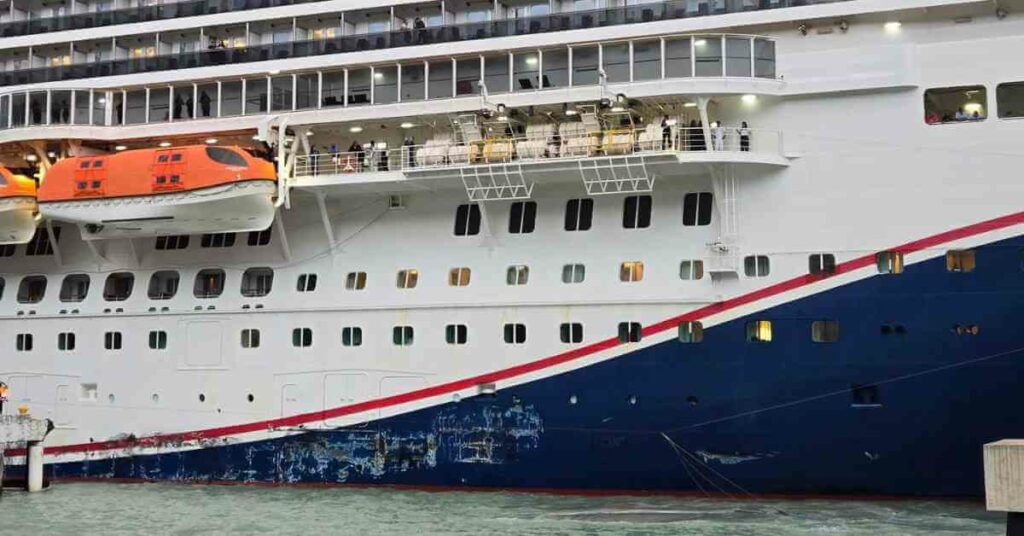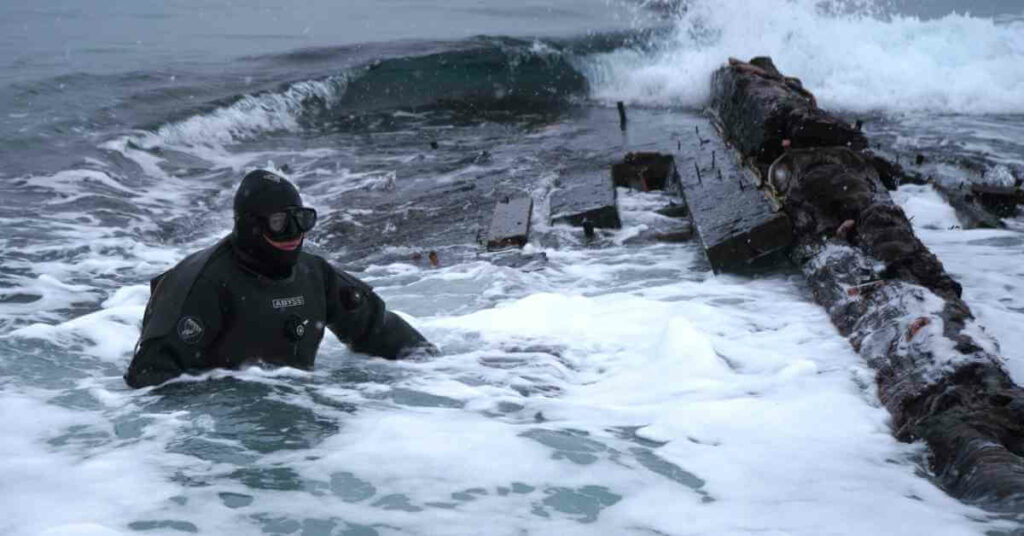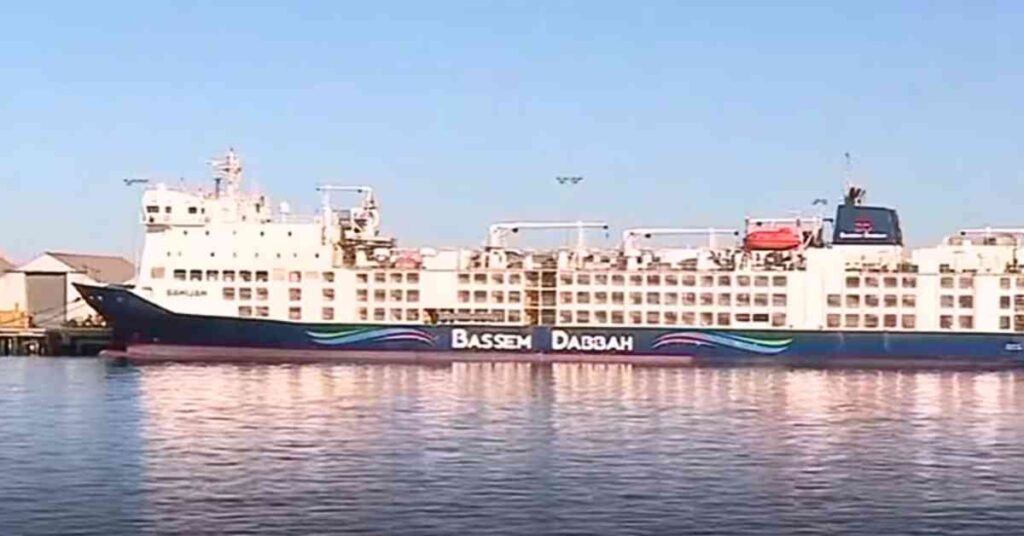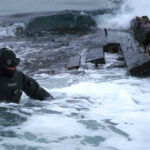Watch: Automation And Remote Crane Operations Prime New Swedish Container Terminal For The Future
When Hutchison Ports Stockholm established their new container terminal to the south of the Swedish capital, as part of their strategy to ‘build for the future’ they installed what are the world’s biggest quay cranes equipped with automation and remote operations technology from ABB. The technology provides the reliability, predictability, and consistency terminal operators are looking for in a fiercely competitive market.
Hutchison Ports is an international ports operator boating 52 container terminals in 26 countries. Its new Stockholm Norvik Port in Sweden features a natural deep-water draught right on the Baltic coast, with its proximity to the fastest-growing area in Scandinavia providing huge business opportunities.
“Compared to many of Hutchison Ports’ container terminals around the world, today’s operation in Stockholm is a bit smaller, but at the same time we are building for the future with capacity to grow,” says Lawrence Yam, CEO of Hutchison Ports Stockholm.
The Norvik terminal currently has capacity of 250,000 TEU, with potential to double that to 500,000 TEU. Quay operations are carried out by two of the world’s biggest quay cranes featuring automation and remote-control technology that provides optimal efficiency for customers. Being a greenfield development, Hutchison Ports was able to design the entire workflow from ship to gate, including on-dock rail services for handover to the onward supply chain.
“The terminal has now been operational for about two years and is progressing towards being the first fully automated terminal in Sweden,” says Andy Lewis, Head of Operations, Engineering and Automation at Hutchison Ports Stockholm.
Video Credits: abbmarine / YouTube
Automation brings big benefits
Ports of Stockholm and Hutchison Ports Stockholm set out to create a state-of-the-art terminal with technology and equipment designed for superior reliability and low carbon footprint. ‘Machine-friendly’ automation is part and parcel of this ambition and ideally suited to a terminal of this size, enabling smoother operations with less risk of damage to equipment and goods. While load and discharge processes are pretty much identical regardless of terminal size, smaller terminals generally require more operational flexibility given the many different sizes of vessels they accommodate. At Norvik the quay cranes serve vessels ranging from small barges up to ships 22 wide.
Workplace experience is another important factor in addition to flexibility. At Norvik, Hutchison Ports Stockholm’s highly competent stevedores are rotated through all parts of the container flow, acting as multifunctional operatives handling the full spectrum of terminal equipment.
Under such conditions, automation helps turn challenges into opportunities.
“With the assistance crane operators get from automation, we are able to achieve both operational stability and consistency, which makes operations more predictable,” says Lewis.
Remote operations boost efficiency, safety, and operator wellbeing
Implementing the latest technology can be a huge benefit for container terminals given the current strain on supply chains due to labor shortages, bottlenecks, and low predictability in liner services. Regardless of the experience and proficiency of individual operators, automation combined with remote operations capability means cranes can perform consistently, running faster with shorter cycle and ramp times.
Remote operations improve overall operator performance primarily through extending visibility with multiple camera views. As container ships have become bigger so have ship-to-shore (STS) cranes, and especially on larger cranes the ability of the human eye is limited by the physical distance between the cabin and the target.
“The biggest difference is the camera angles. They zoom in on the container and we can see big angles all around the ship, and the screens show us everything we need to see around the quay crane. It helps me as a driver to do the work more efficiently as well as enhance the safety of my co-workers,” says Linus Gellborn, a crane operator at Norvik.
Remote operations also serve to improve the working environment for crane operators by physically removing them off the giant machines into the safety and comfort of a control room. The control room also enables a more versatile workplace.
“It’s much easier to take a longer run when you drive the crane with remote operation because it isn’t so exhausting. Being physically in the crane cabin can be uncomfortable and you can’t move around in the same way as you can when operating the crane remotely,” says Gellborn.
“The switch to remote control has been much easier than we thought given that a lot of our operators previously worked with conventional container cranes. Using top-of-the-line technology and automation really makes the job more interesting,” Lewis adds.
Proven concepts for fast commissioning
ABB has been developing crane automation solutions for decades and has been a pioneer in remote operations for container handling in pursuit of greater reliability and efficiency. Although every new project is unique, ABB’s combined experience from hundreds of terminal installations means projects are started off with a robust base of technology solutions and setups that can be adapted to customers’ specific needs.
This was especially relevant for Hutchison Ports Stockholm when it set about building a brand-new terminal.
“ABB brings a lot of pre-made, proven solutions to the table, which made the fast commissioning and integration of automation here at Norvik possible,” Lewis concludes.
Reference: ABB
Do you have info to share with us ? Suggest a correction
About Author
Marine Insight News Network is a premier source for up-to-date, comprehensive, and insightful coverage of the maritime industry. Dedicated to offering the latest news, trends, and analyses in shipping, marine technology, regulations, and global maritime affairs, Marine Insight News Network prides itself on delivering accurate, engaging, and relevant information.

About Author
Marine Insight News Network is a premier source for up-to-date, comprehensive, and insightful coverage of the maritime industry. Dedicated to offering the latest news, trends, and analyses in shipping, marine technology, regulations, and global maritime affairs, Marine Insight News Network prides itself on delivering accurate, engaging, and relevant information.
Latest Videos Articles You Would Like:
- Cruise Ship Damaged Due To Severe Weather, Passengers Stuck Abroad
- Archaeologists Examine 19th-Century Shipwreck Found On Canadian Coast
- Australia Stops Livestock Ship From Sailing Around Africa To Israel Amidst Houthi Attacks
- Iran Warns U.S. Of Targeting Cargo Ships Following Latest Airstrikes On Houthis
- Watch: Ukrainian Forces Destroy Russian Missile Boat In Black Sea Operation
- Two Dead After Tragic Collision Between Water Taxi And Passenger Ferry In the Philippines
Subscribe To Our Newsletters
By subscribing, you agree to our Privacy Policy and may receive occasional deal communications; you can unsubscribe anytime.















